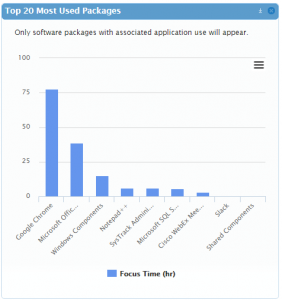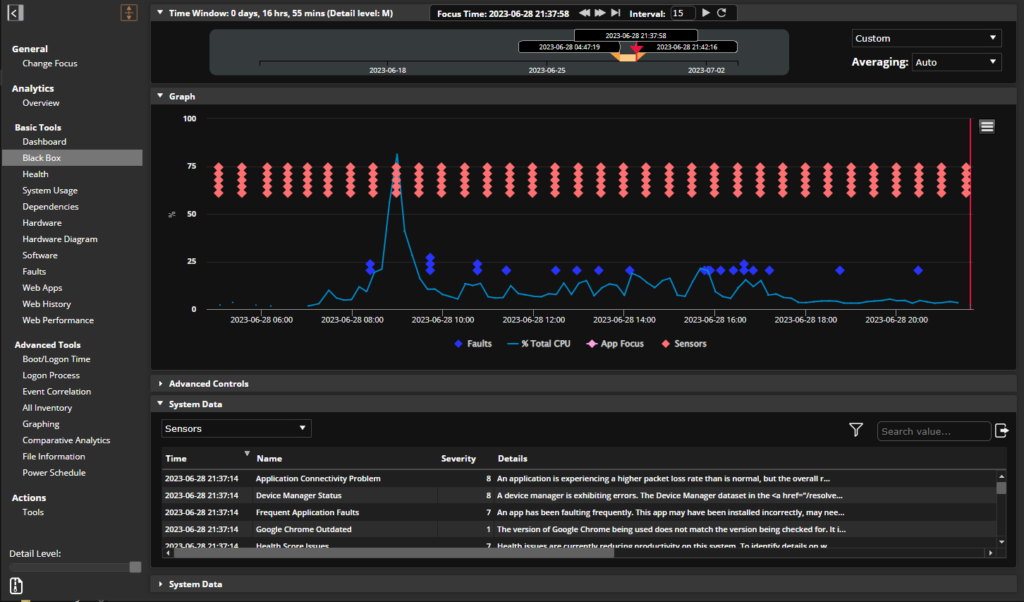
Taking stock of an environment’s software portfolio – what’s installed, what’s being used, what isn’t being used – has consistently been one of the most common use cases of SysTrack. The basic philosophy of SysTrack is to improve the user experience through data-driven business intelligence, and maintaining an efficient, well understood software portfolio is a big part of that. Unused software means you could be paying for unnecessary licenses, and puts more of a burden on IT through additional management overhead caused by expanding the number of applications installed. And the software that is being used needs to be well understood, standardized to recent versions, and delivered through the appropriate mechanism.
At a glance, those examples may seem like something that isn’t all that important to IT, especially if they’re spending the majority of their time fixing issues and responding to help-desk tickets, but being proactive with asset management can dramatically reduce the amount of those issues and tickets that creep up in the future. A few of the main benefits of being proactive with tracking software usage are: reclaiming unused licenses to save costs, mitigating security risks by ensuring recent versions and patches are installed, deciding which applications should be published versus which should be installed locally, and identifying business critical applications for different job roles.
Out-of-the-box datasets displayed through visualizers and reports, available in the standard SysTrack product suite, contain a variety of valuable software data that can put you on the path to realizing those benefits. But given the importance of software asset management, we’ve introduced a Kit that provides focused, interactive dashboards to dig through your software data and provide the insight needed. The Kit contains dashboards related to software performance, usage, and dependencies. In this post, we’ll go over how the content pertaining to usage can be applied to a real-world scenario.
The IT administrator starts off with our Software Portfolio Usage Summary dashboard. It provides an overview of the software package usage within the environment. Right away, the IT administrator can see that among the systems the packages were installed on, very few are actually being used, as displayed below.

As they proceed down the dashboard, they have the ability to view applications within a certain usage percentage, and further down it highlights all the systems that have the previously selected application, as displayed below.

The IT administrator now has the information to start piecing together what each job role requires and how to adjust the licensing accordingly. The IT administrator continues on to the Software Usage for Target System dashboard where they obtain further details of application usage for each system like which applications are most used, as displayed below.

The IT administrator now concludes that the applications that make up the top level license are not being used by most workers and the ones that are being used have a very low usage frequency. This leads the IT administrator to replace the low usage application with a different online application and thus allowing a lower license level. They notice that while this new license applies to most job roles, there is a job role that only requires the lowest license level. Not only were they able to save the company money, but environment is now also less vulnerable to impact due to containing only the necessary applications.
The understanding of software usage is one of the vital components when observing software assets. We will continue to expand on our final category, Performance, with real-world examples of our Software Asset Analytics Kit to show how valuable observing this data is to maintain a successful environment.
Subscribe to the Lakeside Newsletter
Receive platform tips, release updates, news and more



